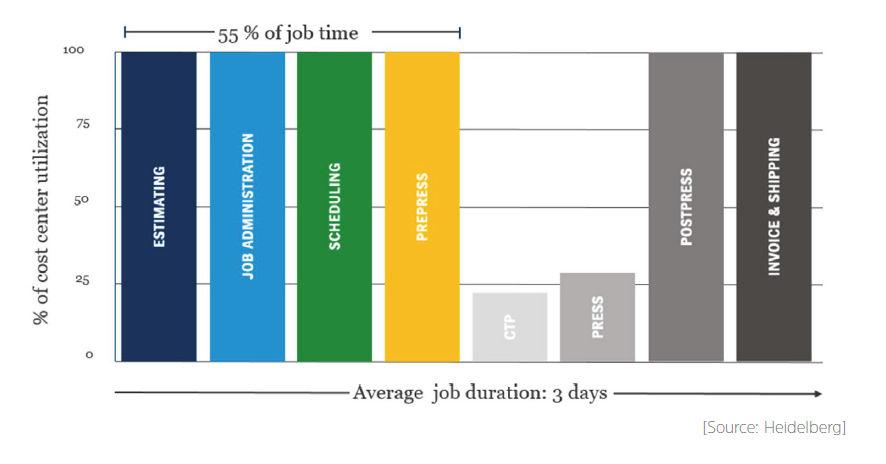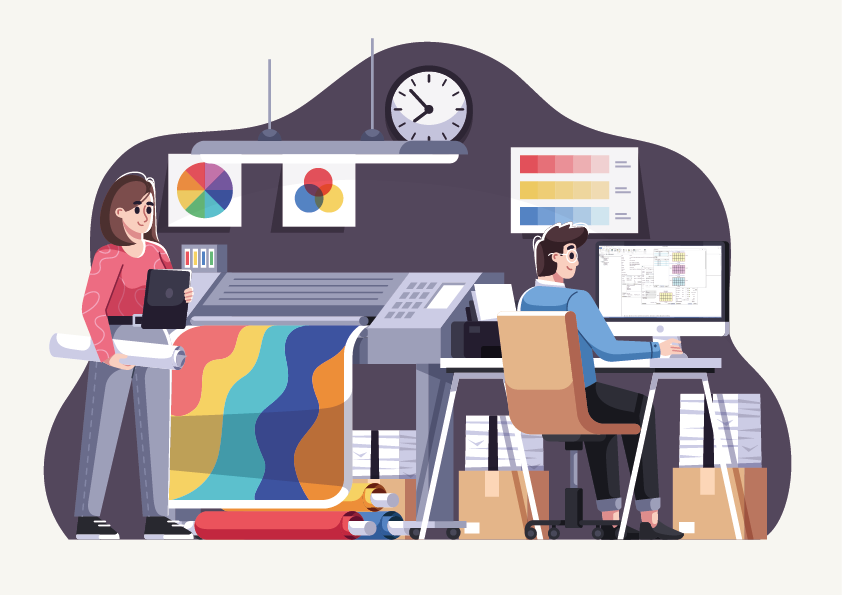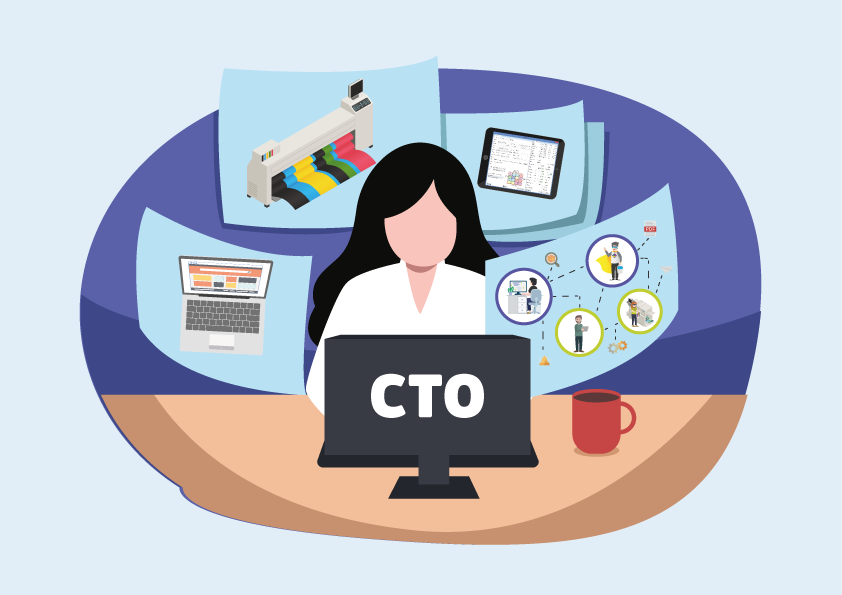Why are so few printers embracing the technology available to them?
My first proper job was as a software developer in the video games industry, before joining the printing industry in the early ‘90s, so you could say that I’ve always been a bit of a technology geek. Ever since that time, I’ve spent a good portion of my career working with customers and other industry vendors to utilize the latest technology and create some pretty exciting workflows.
So I always think it's a shame when I see a printing company that, despite the technology that’s available these days, hasn't embraced everything that this exciting modern world has to offer them.
But I do get it, I do understand why - emerging technology can be rather overwhelming (or even maddening, as I point out below), and coming up with interesting ways to use something you don't quite understand yet, can seem an impossible task.
If you think maybe you fall into this category, then firstly don't worry - you're definitely not alone, but I’d like you to take a look at the below key points. They describe issues/opportunities that I’ve seen grow in importance over the last few years and that I know will continue to do so in the years to come.
1. You need to feed the machines
Equipment is getting faster and smarter. We can’t stop the manufacturers making their presses and equipment run quicker and their setup times shorter and we’ve seen the impact this has had in increasing press capacity in particular. In fact I attended a Heidelberg presentation some 20 years ago where they predicted this very thing. They predicted the sheer shortening of run-lengths and the pressure it would have on the administrative preparation of jobs, as well as the proportional increase of this admin relative to the whole duration of a job. They were absolutely spot on.
Take a look at their illustration below, which highlights the predicament we now find ourselves in. You can easily see the point they are trying to get across – that technological advancements have created lots of spare capacity on our printing presses, but our administrative functions are at breaking point.

How do you resolve this? By automating as much of your administrative workflow as possible, so that production ready jobs are created fast enough to feed the machines.
2. We want it NOW!
We can’t stop the manufacturers making their equipment faster, and actually, we can’t blame them either. It’s the likes of you and me, as consumers, that are creating this evolutionary demand. Nobody longs for the days when we had to call our insurance broker and wait for them to call back with a quote. It’s much more convenient to hop on to our favorite comparison website and get a selection of providers and prices to choose from and buy it right there and then. And how many times have you ordered something that wasn’t the cheapest because you want to get it delivered the next day?
I imagine many of you reading this will remember the days of packed shoulder-to-shoulder exhibition halls, at the likes of IPEX and Drupa. But I’m sad to say that we at Tharstern are seeing a shift away from this and a decline in the footfall at the exhibitions we attend, and not just in print. But it’s not difficult to work out why – because, while we recall those days full of nostalgia, the millennials think we’re crazy trekking off to an exhibition several hours or days away, just to find out information about a product or service that they can learn about online!!
The modern print buyer wants instant responses, instant orders, instant updates and instant gratification. You absolutely cannot deliver this without technology.

3. A collision of technology – you’re selling more than just print
I don’t need to tell you that across the world there is a collision of different technologies being used in the value chain. It’s now about much more than just print. Augmented reality, mobile apps, data analytics, merchandising and logistics are all part of the products that your customers are expecting to see.
In fact I went to the USA recently for our annual user event and I met with one customer who absolutely epitomizes everything that I’ve said here. They had a dedicated team of people preloading eBook readers with documents, packaging them up and then posting them out to their customers’ customers. Yes, there were printing processes involved in the final product, but this customer was offering much more than that. I thought it was a great example of how things have changed for printers, of the type of service that you are now expected to deliver.
Another example of this that springs to mind is not print related at all, but perfectly illustrates my point. I recently had a conversation with a colleague about her house move and she informed me that she chose her solicitor/attorney based on the fact that they had an online portal that pushed updates out to her via email and text every time there was some progress on her house move. I was only a little surprised to hear of this type of technology making its way into the world of law.

4. Millennials will choose the suppliers who show them cool stuff
Did you know that there’s actually only 3 types of technology in the world?
 The first type is all the technology that already existed when you were born. We learn how to use this as we grow up and generally take it for granted.
The first type is all the technology that already existed when you were born. We learn how to use this as we grow up and generally take it for granted.
 The second type is all the technology that was created after you were born. We watch this technology emerge onto the market, we understand exactly why it’s been developed and we think it’s cool.
The second type is all the technology that was created after you were born. We watch this technology emerge onto the market, we understand exactly why it’s been developed and we think it’s cool.
 And then there’s the third type - all the technology that was created after you turned 30, or maybe 40 if you’re a bit techy! You find it difficult to use and you question the purpose of it. It may even make you angry. Think of the teenagers who communicate via Snapchat by taking a photo with their thumb over the camera lens and then typing a message over it. I’m sure it’s not just me who thinks this is bonkers?
And then there’s the third type - all the technology that was created after you turned 30, or maybe 40 if you’re a bit techy! You find it difficult to use and you question the purpose of it. It may even make you angry. Think of the teenagers who communicate via Snapchat by taking a photo with their thumb over the camera lens and then typing a message over it. I’m sure it’s not just me who thinks this is bonkers?
This last type of technology is the one you need to be concerned about. The print buying millennials will want you to understand and be comfortable with the technology they take for granted, and they will select the print suppliers who come up with cool new services delivered using the latest technology.
So what to do about all this?
If after reading the above you think you might probably need to try a little harder to make the most of the technology available to you, here's what you should do:
- Employ people who understand technology, including young people who are excited about the new stuff that comes out. And give these people the autonomy and authority to come up with new ways of using this technology, internally and externally.
- Ask your software partners for advice. They're most likely all technology geeks just like me and my team, who will get very excited when you ask them for suggestions.
- Emulate what other successful companies have done. Talk to other printers and ask them what technologies they've implemented and how it's going for them. As leading business strategy coach Tony Robbins says: "If you want to be successful, find someone who has achieved the results you want and copy what they do and you'll achieve the same results."
The essence of what I’m trying to say is that you need to embrace technology and everything it can offer you, but you don't have to do it alone. Ask for help, employ some millennials, copy what others have done. Just make sure you stay open to the opportunities that technology will present you.
That is how you will feed your machines and meet the expectations of the modern print buyer.
Share this
You May Also Like
These Related Stories

Systemize your print business Part 5–Digitize with software technology

Use technology to attract the next generation of printers
